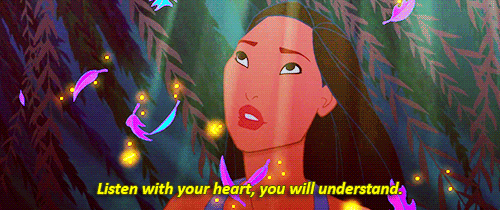What does tension in our heart tell us?
Seeing that my recent post on What the tension in your tailbone is trying to tell you, I have decided to follow-up with What the tension in and around your heart is trying to tell you.
In the first video and post, I detailed that the tailbone houses our primal emotions surrounding our own survival. When we feel afraid, uncertain, and anxious about our current or future environment, that unknowing and fear cause the region of our tailbone to tighten, grip, and hold on. Though as human beings we technically don’t have a tail any longer, the tailbone still preserved similar functions like that of a dog tucking her tail under when she feels threatened.
With this tightening of the region around the tailbone, especially when sustained long-term, it can cause a cascade of other physical (and emotional) manifestations, such as:
Chronic hip and pelvic tension
Pelvic pain
Tailbone pain
Chronic lower back pain
Sciatica
Spinal compression
Neck and shoulder tension
Headaches
Numbness in lower spine and pelvic region
Constantly worrying and feeling anxious
Needing to always plan ahead for worst case scenarios
Hard to “go with the flow” and dislikes spontaneity
Hard to trust others
Hard to feel safe in your body
Today, I would like to move up the spine a bit and talk about the tension in and around our heart, as this is another one of the spinal regions where many of us feel stuck and rigid.
How the upper spine becomes rigid
Anatomically, the upper spine and heart region are already literally more “locked” up due to the structure of the surrounding and connecting ribcage. The ribcage is there for good reason too– to protect our vital organs of the heart and lungs. However, because of this very practical and protective function of the ribcage, there is less mobility in the upper spine as well.
So, not only is our body already set up to have a bit more rigidity (which isn’t always a bad thing because it also provides stability!) in the upper spine behind the heart, our modern culture of desk/computer work further encourages a rigid, caved in position.
Then, of course, this little guy over here called LIFE has to join the party and put upon us: heartbreak, grief, loss, betrayal, and more, all of which cause us to pull ourselves inwards just a little bit each time as we tend to our fragile heart, then proceed to build further walls (read: rigidity) around it so that we do not get hurt again (and yet we do).
In modern society, logical thinking and rational thoughts are lauded, and one is scolded for being too “emotional.” Yet in many ancient Eastern traditions, including that of the Chinese and Indian cultures, the word “heart” translates more as one mind that incorporates both heart and brain.
So what happens when the heart space is rigid, numb, and closed off? Then we’re unable to make wise decisions that are based in both the brain AND heart. Our mind becomes one-sided and “close-minded” (pun intended).
Ironically, when the heart space is rigid and tense, this is when we also become “irrationally emotional,” because we are no longer able to think, speak, and act based out of contentment and compassion, and instead from insecurity, anger, and rashness.
Remember Grandmother Willow from Pocahontas? When Pocahontas approached her in distress and asked her for her advice, what did she say to Pocahontas: Listen with your heart.
The heart needs to remain soft, open, nurtured to unfold and reveal to you its infinite wisdom.
Physical and emotional aspects of rigid upper spine
Now, let’s talk how a rigid upper spine can manifest into many other symptoms that are common today:
Chronic upper back tension and pain
Thoracic kyphosis (excessive rounding of the upper back)
Chronic neck tension
Chronic headaches and migraines
Shoulder mobility issues / frozen shoulders
Irrationality
Quick to anger
Slow to trust
Hesitant to love and receive love
Difficulty expressing emotions
Harsh inner critic
Now, imagine that you are seated in the soft, open, yet strong and resilient centers of your tailbone and your heart. How would that make you feel? Safe and supported? Content and grounded? Compassionate towards self and others? Feeling fluid and strong in the core or your body?
Soften your heart and tap into its wisdom
How I’ve managed to gradually soften the rigidity in both my tailbone and heart regions are through consistent practices of Spinal Release Yoga. It is a restorative-style yoga that comprises of strategic poses and sequencing that specifically helps resolves deep-seated spinal tension and tightness. Lots of props (cushions, pillows, blankets) are used in support of the body so that the body feels safe enough to gently unravel the deep layers of tension. As these tensions resolve, we are ultimately peeling away layers of emotional protections that we have put up as a result of our upbringing, conditioning, and traumas.
Check out my self-guided Spinal Release Yoga series, which includes 3 full-length classes that are foundational to the practice so that you can start learning the practice of deep release and relaxation today.



